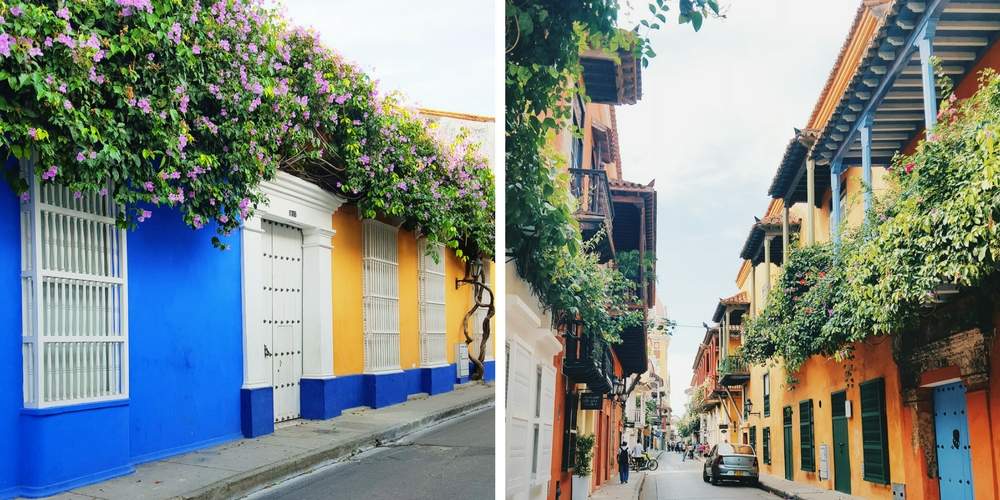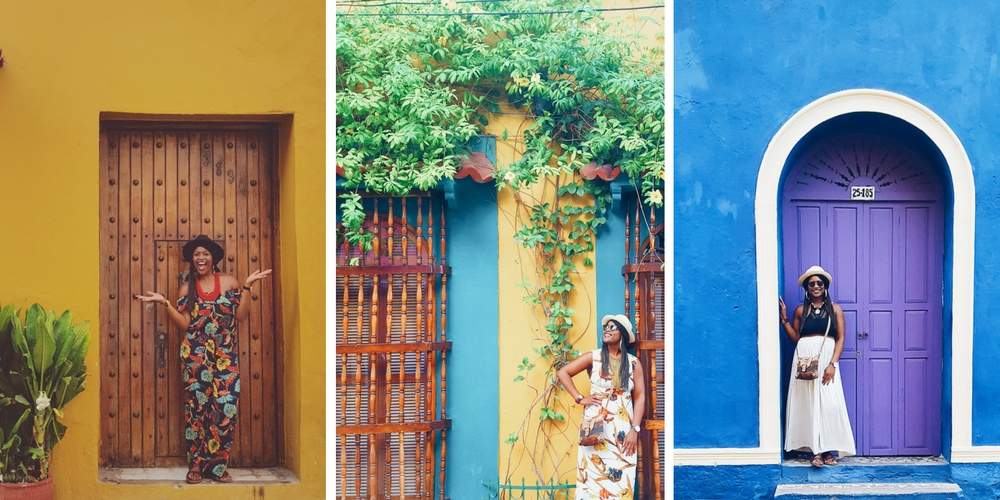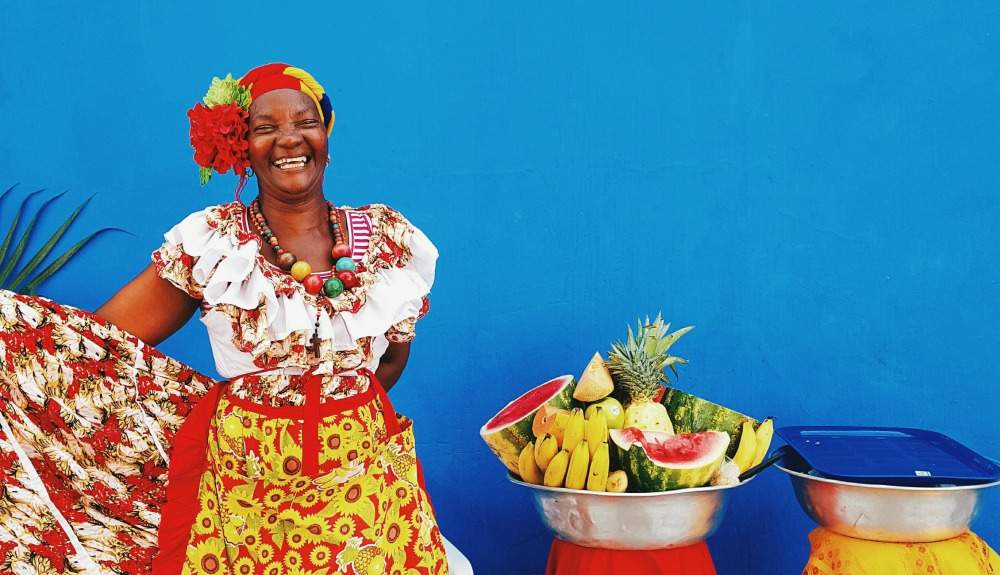While a stroll through the colorful streets of Cartagena might lead one to believe that the vibrant and vivacious shades of buildings, textiles, fruit, and flowers are what give the country its character, allow me to scratch the surface a bit deeper.

I remember walking down the streets minding my business and one by one, locals would shout, “MY SISTER!” “MY COLOR!” “WE ARE ONE!” and I loved it.
What’s that? The universal black code is this: it doesn’t matter where you’re from, but if you have black skin color, you (and your ancestors) have suffered from some form of oppression, and other black people, no matter their country, will recognize that.
I’m not really sure what people imagine Colombians to look like, but a majority of people I encountered there were my color (cocoa brown) or darker, although there’s a lot of variety when it comes to skin tones and that can make some folks’ heritage more ambiguous.

Those Africans and their descendants built the beautiful area that’s now known as Old Town Cartagena, and as soon as it became lucrative enough, the area became gentrified.
Thanks for building everything for us! We’ll just take things over and profit from here. Déjà vu? It’s too much like being back home in the states for me.
But I loved how often I saw signs on their walls and doors, “ESTA CASA, NO SE VENDE, NO SE ARRIENDA!”
Translation: “THIS HOUSE IS NOT FOR SALE, NOT FOR RENT!” They built it. They owned it.
But gentrification isn’t even the half of it. When slavery was abolished in the 19th century, the Colombian government tried to cover up their wrongs by promoting the ideology of mejorando la raza (bettering the race) through miscegenation, or intermarrying with people with lighter-skin and eyes, that were more “European” looking in hopes of ridding the country and its people of any visible traces of African ancestry.

But some Afro-Colombians weren’t swayed. They didn’t buy the government propaganda or cede to societal pressure and went to live in isolated jungles with the indigenous people to preserve their culture, customs, and traditions.
And because of that, their beautiful, black skin color lives on here today.
There will always be some people who will question why I bring up race and colorism so much in my travel writing, and the reality is that I can’t make myself transparent (colorless) any more than the next person.

And by being black in certain countries, I’m able to have a unique experience with locals who’ve either never seen someone like me, or want me to know that my kind are welcomed to their country.
Some places are more welcoming for black travelers than others. Cartagena ranks high on that scale for me.
Editor’s Note: For a very different take on Cartagena, check out On Not Liking Cartagena and Not Finding Afro-Colombia at Girl Unstoppable.
Go, see, experience new places, and learn about the world and its peoples. Keep your eyes and more importantly, your mind open. Because the sooner we can accept how we wrongly perceive others based on their colors, and rid our minds of those associated biases, the sooner we can unite in understanding and empathy.
Like this? Sign up for the Daily Dose and get more BootsnAll in your inbox.
Gloria Atanmo is the voice behind The Blog Abroad and author of From Excuses to Excursions. She’s been traveling the world for over 1,000 days, chronicling her journey, discoverings, and funny stories across 45 countries and 5 continents along the way. You can also follow her daily adventures on Instagram at @glographics and Facebook.
Photo Credits: All photos courtesy of the author and may not be reproduced or used without permission.